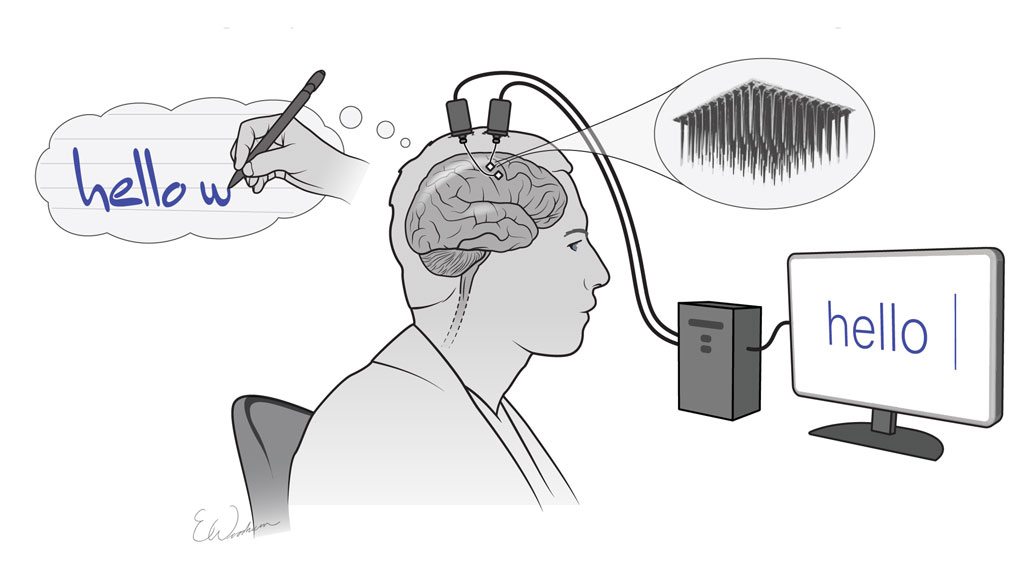By
Electrodes in a paralyzed man’s brain turned his imagined handwriting into words typed on a screen. The translation from brain to text may ultimately point to ways to help people with disabilities like paralysis communicate using just their thoughts.
A 65-year-old man had two grids of tiny electrodes implanted on the surface of his brain. The electrodes read electrical activity in the part of the brain that controls hand and finger movements. Although the man was paralyzed from the neck down, he imagined writing letters softly with his hand. With an algorithm, researchers then figured out the neural patterns that went with each imagined letter and transformed those patterns into text on a screen.
From his brain activity alone, the participant produced 90 characters, or 15 words, per minute, Krishna Shenoy, a Howard Hughes Medical Institute investigator at Stanford University, and colleagues report May 12 in Nature. That’s about as fast as the average typing rate of people around the participant’s age on smartphones.





